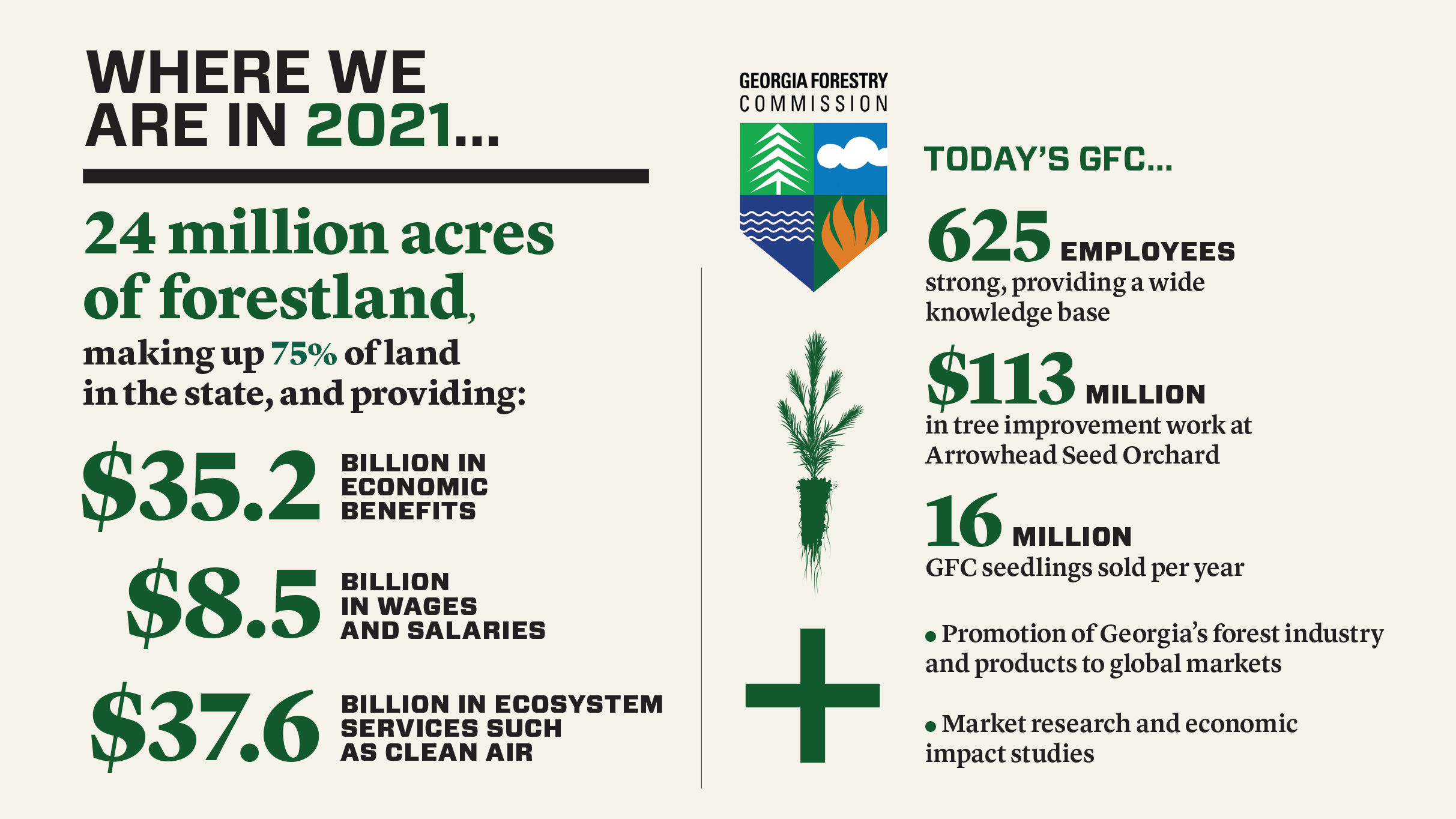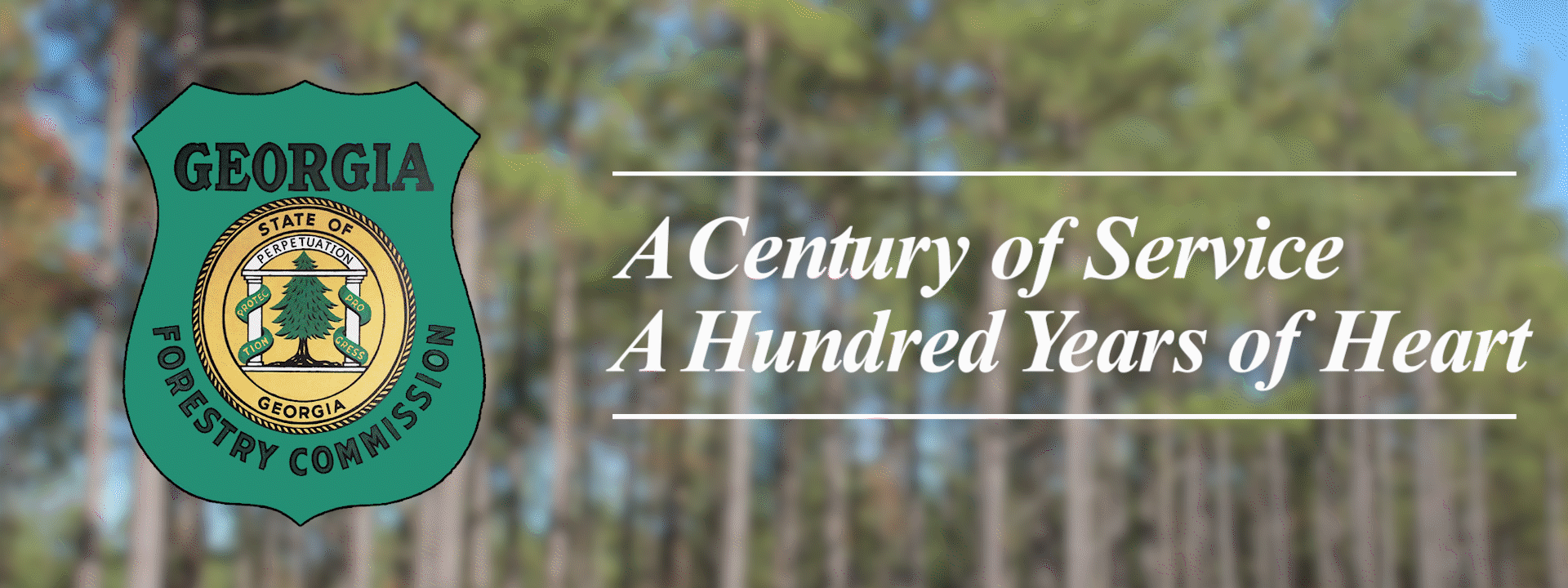Long, long before there were people dedicated to the sustainability of the resource, there were trees. Millions upon millions of acres, stretching beyond the horizon in every cardinal direction.
The Beginning of Forestry and Birth Year of GFC
1922 - Present
Looking towards the Future

Past Director Memories:
- Fred Allen Memory of Fire Control to a Variety of Services
-
Fred Allen Memory of the Forest Inventory & Analysis Program
- Robert Farris Memory of Equipment Changes through the Years
- Ken Stewart Memory of the Georgia Carbon Sequestration Registry
- Urban Forestry in Georgia with Ken Stewart and Dale Higdon
-
GFC’s Centennial Memory of the “Right – Things – Right” mantra
Additional Resources:






